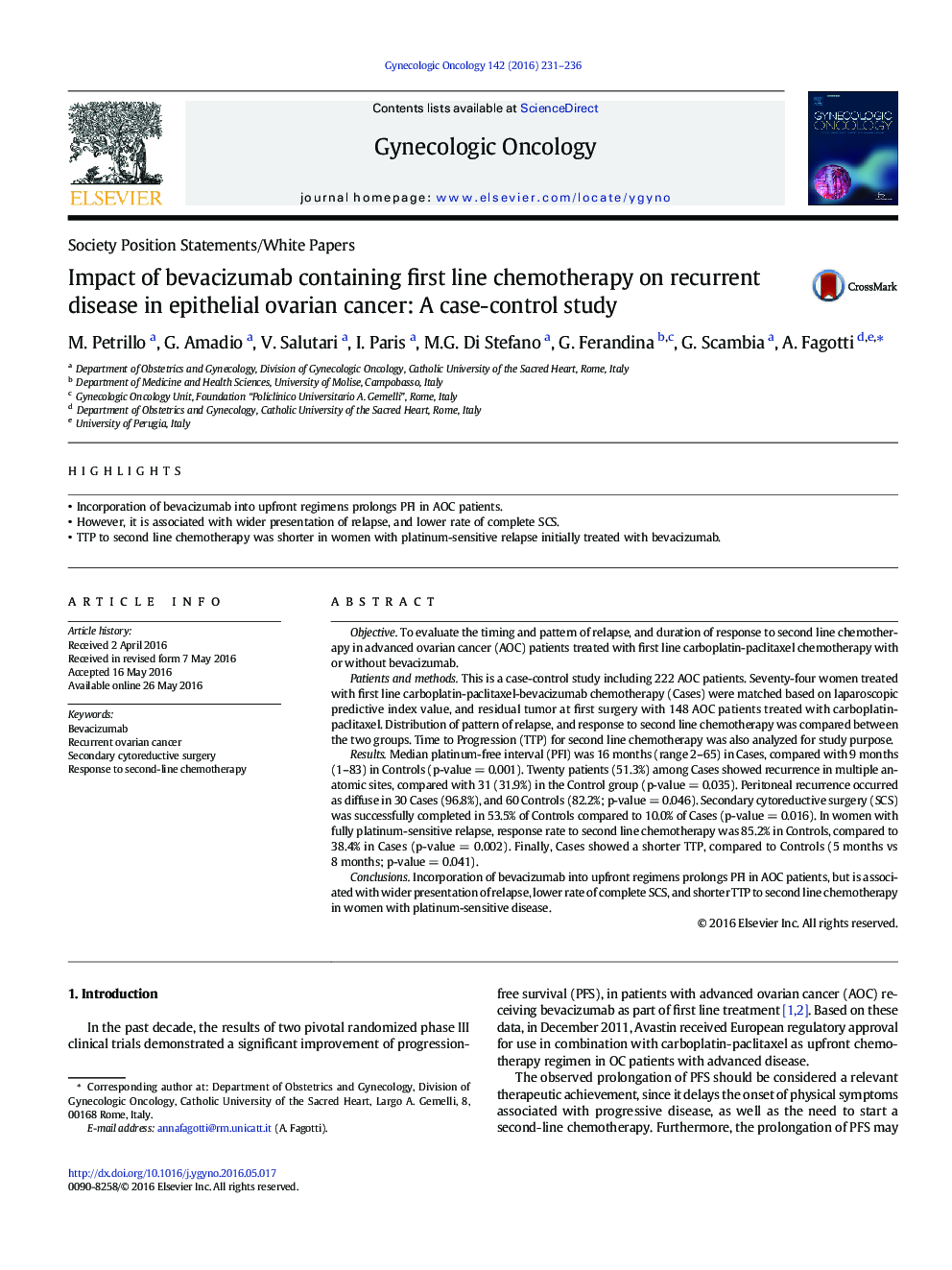| Article ID | Journal | Published Year | Pages | File Type |
|---|---|---|---|---|
| 3946347 | Gynecologic Oncology | 2016 | 6 Pages |
•Incorporation of bevacizumab into upfront regimens prolongs PFI in AOC patients.•However, it is associated with wider presentation of relapse, and lower rate of complete SCS.•TTP to second line chemotherapy was shorter in women with platinum-sensitive relapse initially treated with bevacizumab.
ObjectiveTo evaluate the timing and pattern of relapse, and duration of response to second line chemotherapy in advanced ovarian cancer (AOC) patients treated with first line carboplatin-paclitaxel chemotherapy with or without bevacizumab.Patients and methodsThis is a case-control study including 222 AOC patients. Seventy-four women treated with first line carboplatin-paclitaxel-bevacizumab chemotherapy (Cases) were matched based on laparoscopic predictive index value, and residual tumor at first surgery with 148 AOC patients treated with carboplatin-paclitaxel. Distribution of pattern of relapse, and response to second line chemotherapy was compared between the two groups. Time to Progression (TTP) for second line chemotherapy was also analyzed for study purpose.ResultsMedian platinum-free interval (PFI) was 16 months (range 2–65) in Cases, compared with 9 months (1–83) in Controls (p-value = 0.001). Twenty patients (51.3%) among Cases showed recurrence in multiple anatomic sites, compared with 31 (31.9%) in the Control group (p-value = 0.035). Peritoneal recurrence occurred as diffuse in 30 Cases (96.8%), and 60 Controls (82.2%; p-value = 0.046). Secondary cytoreductive surgery (SCS) was successfully completed in 53.5% of Controls compared to 10.0% of Cases (p-value = 0.016). In women with fully platinum-sensitive relapse, response rate to second line chemotherapy was 85.2% in Controls, compared to 38.4% in Cases (p-value = 0.002). Finally, Cases showed a shorter TTP, compared to Controls (5 months vs 8 months; p-value = 0.041).ConclusionsIncorporation of bevacizumab into upfront regimens prolongs PFI in AOC patients, but is associated with wider presentation of relapse, lower rate of complete SCS, and shorter TTP to second line chemotherapy in women with platinum-sensitive disease.
